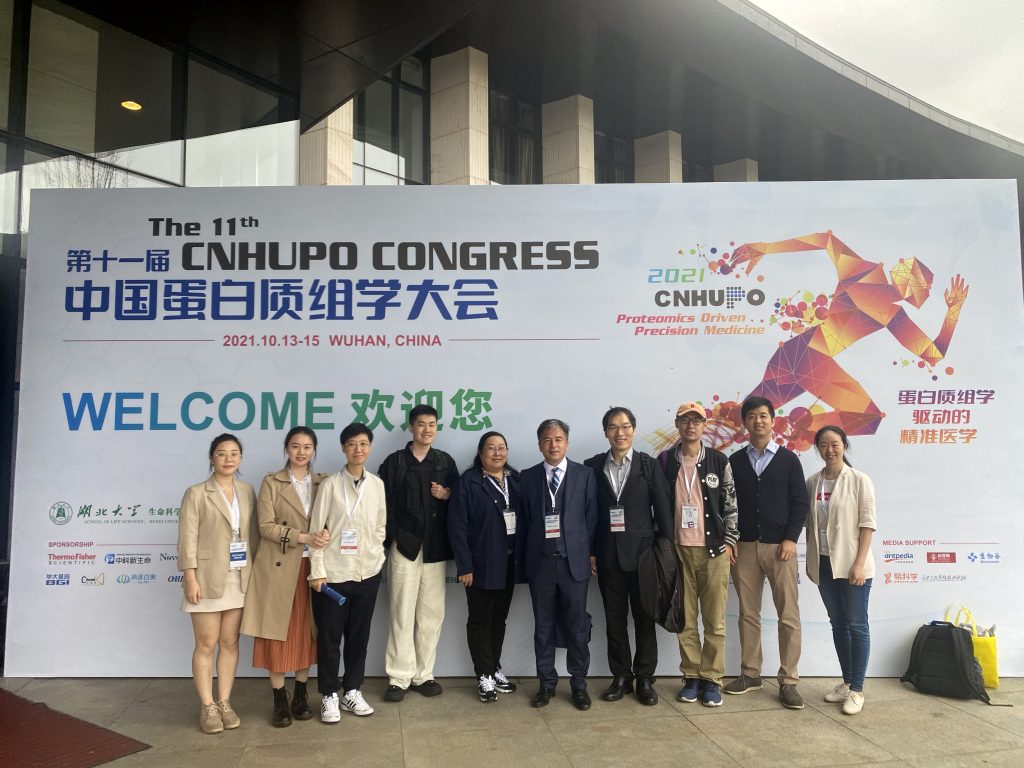Here I cache the memo for CN-HUPO 2021 conference.

Different fields of proteomics share similar logics and same perspectives
Besides plenary sessions, I tried different disciplines of sessions that talked about researches out of clinical proteomics, such as the chemical and pharmaceutical proteomics, the top-down strategies, etc. For example, Gang Li with his targeted proteomic approach ADPL (activity dependent proximity ligation) made me realize that TMTpro and its resemblence, which have become indispensable in clinical proteomic studies, were based on a very simple click chemistry phiolosophy and could be re-designed via switching ligands or adding extra functinal groups. Interestingly, they were not termed labelling proteomics. These types of chemical reactions have been widely applied in genome studies, such as resolving spatial omics vsia adding and targeting nuclear localization sequence (NLS). Transferring the wisdoms to proteomic studies may be of use to big data spatial proteomics.
Although they are from different aspects and have different research focuses, the logics and perspectives are very similar, that is, all of the research are question-driven, and targeted to medical applications.Taking single cell studies for example, every method that the speakers developed points to a very specific biomedical question. Yukui Zhang is an established scientist in analytical chemistry and he develops in-sity trace sample preparation to analyze monkey oocytes. This suits the oocyte sample more because 1) this method could not process samples less than 1ng and an oocyte contains >10ng proteins; 2) in-situ processing is suited for resolving spatial characteristics. 1123 proteins could be quantified and 32 differentially expressed proteins at different developmental stages were focused after analyzing 15 oocytes.
Think different, think better
There exists 4 types of basic groups in eukaryotics. This is a common sense in the field of science and synthetic biologist took advantage of the base tools to edit genes. While the advances of gene editing are being transformed to applications in medicine, explorers in genome studies are setting foot into a more exciting study: discovering/designing new basic groups, aka the alien basic groups (外星碱基). This is a game-changing field in that not only will the information depth of our DNA/RNA be exponentially increased, but also the ideas could be revolutionized in thepossibility of artificial lives, bio storge, etc. Xian-en Zhang as a KOL in engineering/synthetic biologist has classed this type of research as one of the key technologies to watch. This excites me.
Comparatively, I have seen numeric technolgies on single cell studies and found them although experimentally doable, but repetitive and in lack of REAL technical barriers (技术壁垒). Most of them either applied 1) TMT-based label techniques with delicately designed carrier channels and 2) ion-mobility based label-free techniques with very expensive LC-MS equipment. These ideas have been implemented by Nikolai Slavov in 2018 and Mattias Mann in 2019, respectively. For other techniques, Ruijun Tian’s SISPROT processes samples in one pot. This implementation could be traced back to 2015 by Mann with a somewhat similar idea: the iST. Catherine Wong’s GOAD uses microfluidics to process single cells. The base device is built upon SODA by Qun Fang, which hasn’t been commercialized nor available in most labs. An orignial but easy-to-implement technology is yet to be devolped.
With more and more investments on proteomic technologies, I sensed stronger challenges and opportunities. I’m excited to join the game.